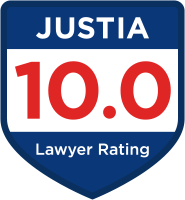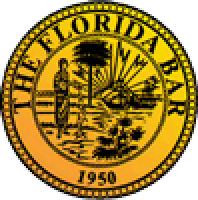- Call Today: (904) 438-8082 Tap Here to Call Us
Understanding Florida’s Open and Obvious Defense in Premises Liability Cases
Introduction
When a person is injured on someone else’s property, they may have the right to seek compensation if the property owner failed to maintain safe conditions. However, property owners and insurance companies often use the open and obvious defense to avoid liability. This legal argument claims that the hazardous condition that caused the injury was so obvious that the injured person should have noticed and avoided it.
This guide explains how the open and obvious defense works in Florida, how it affects premises liability claims, and how injury victims can counter this defense to recover compensation.
What Is the Open and Obvious Defense?
The open and obvious defense argues that a property owner should not be held responsible for an injury if the dangerous condition was easily visible or otherwise obvious to a reasonable person. If a hazard is deemed open and obvious, the injured party may be considered partially or fully responsible for failing to recognize and avoid the danger.
For example, if a person trips over a large, clearly visible crack in a sidewalk, the property owner may argue that the hazard was open and obvious, and the victim should have taken precautions to avoid it.
How the Open and Obvious Defense Affects Premises Liability Claims
Florida law places a duty on property owners to maintain safe conditions and warn visitors of known hazards. However, when a danger is considered open and obvious, courts may reduce or eliminate the property owner’s liability. The key factors in determining whether this defense applies include:
- Whether the hazard was clearly visible or could have been easily detected.
- Whether a reasonable person would have noticed the danger and taken steps to avoid it.
- Whether the injured person was distracted or acting negligently at the time of the accident.
Even if a hazard is deemed open and obvious, the property owner may still have a duty to take reasonable steps to prevent harm, particularly if the danger is unreasonably risky.
Exceptions to the Open and Obvious Defense
While the open and obvious defense can limit liability in some cases, there are exceptions where the property owner may still be held responsible.
Unreasonably Dangerous Conditions
If a hazard presents a significant risk of harm, the property owner may still have a duty to fix the problem or provide a warning, even if the condition is visible. For example, a property owner may argue that a large hole in a parking lot was obvious, but if the hole posed a serious risk of injury, they may still be liable for failing to repair it.
Distraction Exception
If a person was reasonably distracted and did not notice the hazard, the open and obvious defense may not apply. For instance, if a grocery store places promotional signs in a way that draws a customer’s attention away from a spilled liquid on the floor, the store may still be responsible for the resulting injury.
Property Owner’s Duty to Maintain Safe Conditions
Even if a danger is obvious, property owners must still maintain safe conditions. If a store owner knows that customers frequently trip over an uneven step, they may be required to fix the problem or provide clear warnings, even if the step is visible.
How to Counter the Open and Obvious Defense
Injured parties can challenge the open and obvious defense by demonstrating that:
- The hazard was not as obvious as the property owner claims.
- The property owner failed to take reasonable precautions to prevent harm.
- The dangerous condition posed a significant risk that justified additional warnings or repairs.
- The victim was distracted due to circumstances created by the property owner, such as poor lighting or obstructed views.
Gathering strong evidence, including photos, witness statements, and expert testimony, can help counter this defense and strengthen a premises liability claim.
Steps to Take After a Slip and Fall or Premises Liability Accident
If you are injured on someone else’s property and believe the open and obvious defense may be used against you, taking the following steps can help protect your claim:
- Take photos of the hazard and surrounding area to document visibility and potential distractions.
- Report the accident to the property owner or manager and request an incident report.
- Seek medical attention immediately to document your injuries.
- Obtain witness statements from anyone who saw the accident.
- Avoid making statements to insurance companies without consulting an attorney.
How a Personal Injury Attorney Can Help
Premises liability cases involving the open and obvious defense can be complex. A personal injury attorney can assist by:
- Investigating the accident and gathering evidence to challenge the defense.
- Consulting with safety experts to establish that the hazard posed an unreasonable risk.
- Demonstrating that the property owner failed to take reasonable precautions.
- Negotiating with insurance companies to secure fair compensation.
At Bonderud Law, we represent injury victims in premises liability cases and fight against unfair legal defenses used by property owners and insurance companies. If you have been injured due to a hazardous condition on someone else’s property, contact us today for a free consultation.
Conclusion
The open and obvious defense is frequently used in Florida premises liability cases to limit property owners’ responsibility for injuries. However, exceptions exist, and property owners may still be liable if the hazard posed an unreasonable risk or if they failed to take reasonable steps to prevent harm.
If you have been injured on someone else’s property and are facing challenges in your claim, consulting an experienced personal injury attorney can help ensure that you receive the compensation you deserve.











